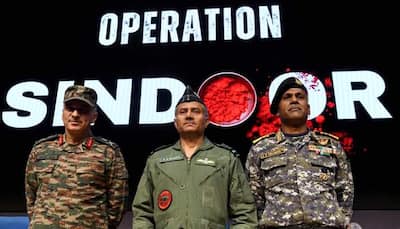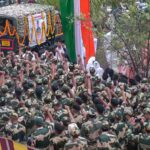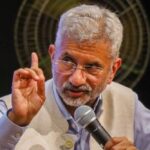India launched Operation Sindoor on May 7 in retaliation for the April 22 Pahalgam terror attack, where 26 civilians lost their lives. Addressing the nation on the eve of 12th May, Prime Minister Narendra Modi made it clear that ‘OPERATION SINDOOR’ is not just a name but is a reflection of the feelings of millions of people in the country and an unbroken pledge of justice. He said, “We remain committed to taking strong steps to safeguard India and its people. On the battlefield, we have always defeated Pakistan, and this time. Operation Sindoor has added a new dimension.” As Operation Sindoor is now on hold due to an understanding between India and Pakistan following a military-level escalation, here’s what India achieved with the strategic operation:
India successfully destroyed nine major terror launchpads in Pakistan and Pakistan-occupied Jammu and Kashmir (PoJK), targeting Lashkar-e-Taiba, Jaish-e-Mohammed, and Hizbul Mujahideen facilities. Over 100 terrorists were killed in action.
India redefined the rules of engagement, striking deep into Pakistan’s heartland, including Punjab province and Bahawalpur, once considered out of bounds even for U.S. drones. India made it clear: neither the LoC nor Pakistani territory will remain untouched if terror originates from there.
Operation SINDOOR drew a new red line- if terror is state policy, it will be met with a visible and forceful response. This marked a shift from deterrence to direct action.
India rejected the artificial separation between terrorists and their backers, striking both simultaneously. This ended the impunity enjoyed by many Pakistan-based actors.
Indian Air Force bypassed and jammed Pakistan’s Chinese-supplied air defence systems, completing the mission in just 23 minutes using Rafale jets, SCALP missiles, and HAMMER bombs, demonstrating India’s technological edge.
India’s multi-layered air defence, including the indigenous Akashteer system, shot down hundreds of drones and missiles. This also showcased India’s growing capabilities in exporting advanced defence systems.
India avoided civilian or non-terror military targets, showcasing its zero-tolerance for terror while containing the situation from escalating into full-scale war.
Multiple high-profile terrorists on India’s most wanted list were neutralized in a single night, crippling key operational modules. High-value targets eliminated include Yusuf Azhar, Abdul Malik Rauf, Mudassir Ahmad. These individuals were linked to the IC-814 hijack and the Pulwama blast.
On May 9–10, India became the first country to strike 11 airbases of a nuclear-armed nation in a single operation, destroying 20% of Pakistan’s air force assets. High casualties were inflicted at Bhoolari Airbase, including the death of Squadron Leader Usman Yusuf and the destruction of key fighter jets.
: The Indian Army, Navy, and Air Force worked in full coordination, demonstrating India’s growing joint military prowess.
India showed the world that it does not require anyone’s permission to defend its people. It reinforced the idea that terrorists and their masterminds can’t hide anywhere, and if Pakistan retaliates, India is prepared for a decisive counterstrike.
: Unlike in previous conflicts, this time, multiple global leaders backed India, rather than calling for restraint. The shift showed India’s improved global standing and narrative control.
: For the first time, India’s actions were seen purely through the lens of counter-terrorism, with the Kashmir issue completely decoupled from the strike narrative. This was made possible by the precision and clarity of Operation SINDOOR.
Stay informed on all the , real-time updates, and follow all the important headlines in and on Zee News.








